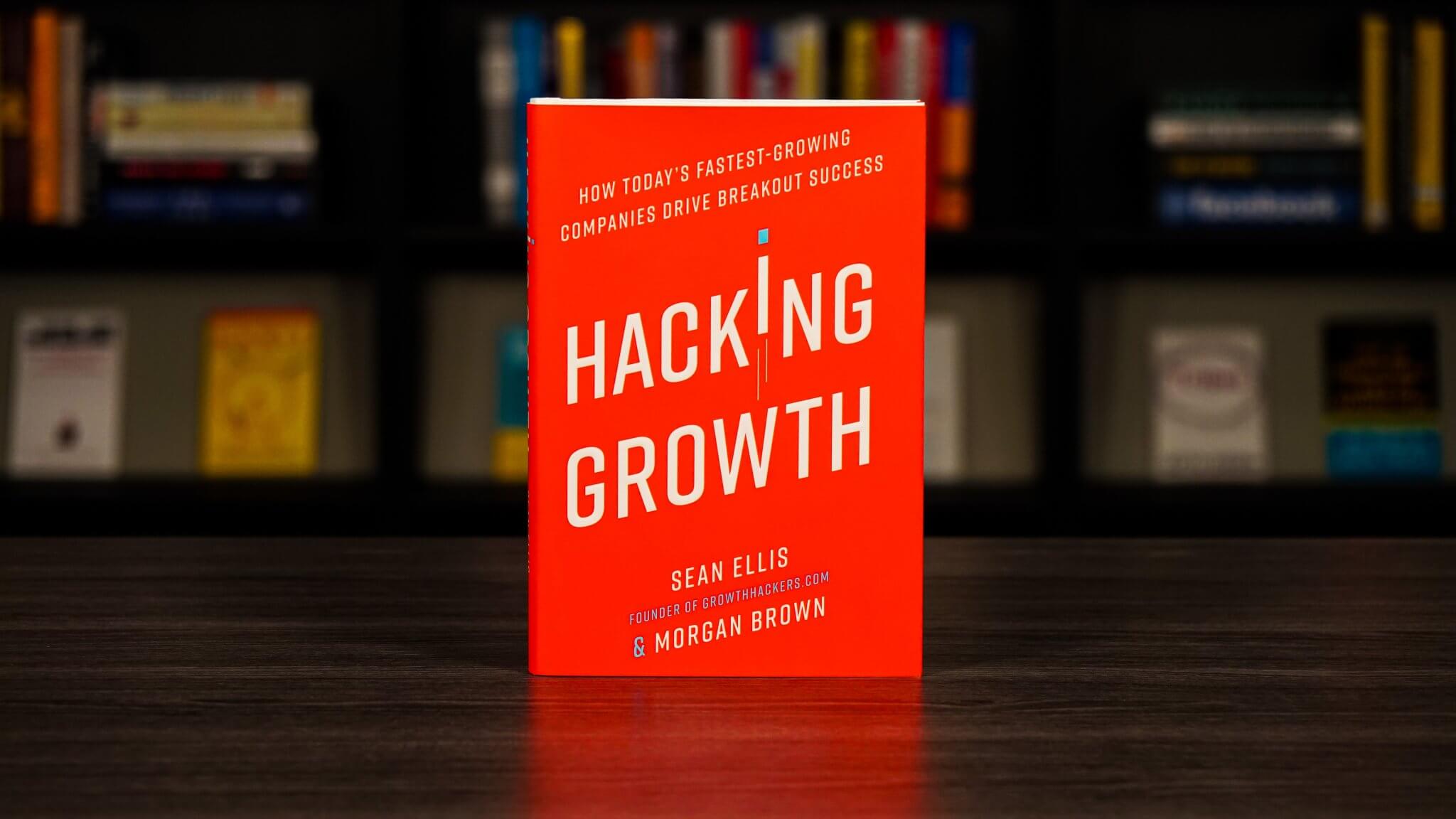Stalled growth is one of the most pressing challenges in business today. Hacking Growth helps companies achieve breakout results by building a culture of continuous experimentation. It addresses four levers of growth: acquisition, activation, retention, and monetization.
It’s recommended for marketers, product managers, or anyone else that wants to drive product or business growth. The book doesn’t offer a silver bullet or marketing hack to instantly transform your results. Instead it provides a powerful process for building cross-functional teams that create results through continuous experimentation.
1. Build Growth Teams With Diverse Talent
At most companies, collaboration between departments is woefully uncommon. Teams are often separated into isolated groups that rarely talk, share information, or collaborate. However, growth teams must necessarily include members from a wide range of specialties and departments.
Successful growth hacking starts with the creation of one or more cross-functional teams. Each team begins with a growth lead to manage the process. Other team members often include: product managers, software engineers, marketing specialists, data analysts, and product designers.
It’s not unusual to encounter resistance when first establishing a growth team. The process consists of significant realignment of personnel. And many team members have preconceived notions about the ownership of initiatives: what teams are supposed to do and how they are supposed to do it.
Growth teams can ease these tensions if they are managed correctly and if the whole team is rewarded for achieving shared goals. It is also imperative that a high-level executive is given responsibility for the team to ensure it can cross the bounds of departmental responsibilities as needed.
2. Determine If Your Product Is Must-Have
One of the cardinal rules of growth hacking is that you must not move into high-tempo growth experimentation until you know your product is must-have, why it’s must-have, and to whom it is a must-have. In other words, what is it’s core value, to which customers, and why.
This process starts by identifying the “aha moment”. This is the moment that the utility of the product really clicks for it’s users: when the users really get the core value—what the product is for, why they need it, and what benefit they derive from using it. Or in other words, why that product is a “must-have.”
Stop yourself from guessing what the elusive feature might be. Instead, adopt rigorous methods for probing into user behavior to discover the core value. Seek out truly avid fans by mining user data and feedback, and then search for similarities in the ways they use the product for hints about what they value most.
One way to determine whether or not your product is must-have is by sending a survey to a few hundred active customers. Ask them “How disappointed would you be if this product no longer existed tomorrow? (a) very disappointed, (b) somewhat disappointed, (c) not disappointed, or (d) I no longer use it.”
If 40% or more answer “very disappointed” then the product has achieved must-have status. If only 25-40% do so, often what’s needed are tweaks to the product or the language used to describe it. But, if less than 25% do so, it’s likely that the audience is the wrong fit or the product needs more work before a growth push.
Keep in mind, this survey isn’t recommended beyond the early testing stage. It’s not a good idea to suggest to your customer base that the product might be discontinued. Also, if you don’t have a large enough base of users to get a few hundred responses – rely on customer interviews instead.
3. Identify The Growth Levers Of Your Business
The first step in creating your growth strategy is to identify the metrics that matter most for your product’s growth. This involves determining the specific actions that correlate most directly to users experiencing the core value of your product. Once identified, the related metrics become your core growth levers.
The next step is to create a growth equation, a simple formula that represents all of the key factors that combine to drive your growth. This equation is different for every product or business. Reducing the complexity of your growth levers down to a basic formula is immensely helpful in directing focus.
Narrow your focus by choosing a single key metric for all growth activity. This will become your “North Star”, the metric that most accurately captures the core value you create for your customers. To determine what it is, ask yourself: Which of the variables in your growth equation best represents the delivery of the must-have experience you identified for your product?
The North Star may change over time as the company grows. But regardless, the clarity helps keep data analysis tightly focused. That way you can get your high-impact experiments off the ground as quickly as possible.
4. Learn & Adapt Using The Growth Hacking Cycle
The Growth Hacking Cycle can help a growth team operate as a well-trained, finely tuned, fast-tempo experimenting machine. It consists of four stages: (1) data analysis and insight gathering, (2) idea generation, (3) experiment prioritization, and (4) running the experiments.
Stage One: Analyze
Dive into the data available from an initial wave of users to identify distinctive groups. Ask yourself things like: What are my best customers’ behaviors? Which features do they use? What are the characteristics of my best customers? Which traffic sources were they acquired from? What events cause users to abandon the product? What actions don’t abandoners take that my best customers do?
Stage Two: Ideate
Ideas are the rocket fuel of growth. You need a pipeline of ideas for experiments you can run to improve your core metrics. Unbridled ideation is key to the growth hacking process. You want ideas to come in from the team, others in the company, outside partners or suppliers, and customers. Set up a project management system to coordinate the submission and management of ideas.
Stage Three: Prioritize
Before considering an idea, score it using the ICE system. The submitter should rate each idea on a ten-point scale for Impact, Confidence, and Ease. The average of those scores provide an aggregate score for each idea. Don’t spend too much time fine-tuning the score. It’s simply a tool to help the team or growth lead select upcoming experiments.
Stage Four: Test
Identify both a control-group and an experiment-group for each test to ensure results can be tracked properly. Then set a 99 percent statistical confidence bar for each test. In the event of a tie, the “win” should go to the original version. Log all results in a test summary and share it with the team.
Manage the cycle by using a one-hour weekly growth team meeting to review results and agree on the next week’s set of experiments. Keep in mind that even failed experiments can lead to significant learning over an incredibly short period of time.
5. Execute On The Growth Hacking Playbook
The second part of the book, titled “The Growth Hacking Playbook,” offers a detailed set of tactics for acquiring, activating, retaining, and monetizing users or customers. While there are far too many ideas to cover in this summary, here is a quick overview of a few highlights from each section.
Acquisition
This is about (1) finding cost-effective ways to acquire new customers, (2) optimizing language/market fit or how well your messaging resonates with your target audience, and (3) ensuring channel/product fit or finding marketing channels appropriate for reaching your intended audience.
Activation
Start by mapping all of the steps that get users to your product’s “aha moment”. Then create a funnel report that profiles the conversion rates for each of the steps. And finally, conduct surveys and interviews of users who progressed through each step and those who left early. This way you can get a better sense of the kind of experiments you might run to improve activation.
Retention
User retention falls into three phases: initial, medium, and long-term. Initial retention often comes down to increasing the rate at which users reach the product’s “aha moment”. Medium retention comes down to helping users develop a habit or routine around using the product regularly. And long-term retention is all about ensuring that a product keeps offering customers more value over time.
Monetization
Start by highlighting all of the opportunities in the customer’s journey—from acquisition to retention—for earning revenue. Identify barriers such as friction in the payment or renewal process. Perform cohort analysis to determine differences between your highest and lowest paying customers. And make use of surveys to find out what product improvements appeal to the various cohorts.
Driving growth is never truly finished. The breakout companies that sustain their success are those who are constantly pushing for more, leveraging their success, capitalizing on new opportunities, and creating a virtuous cycle. Growth hacking is more than a business strategy or process. It’s a philosophy, a way of thinking, and it’s one that can be adopted in any team or company, big or small.
After The Hacking Growth Book Summary

This book summary of Hacking Growth covered five insights for accelerating growth. However, it’s not meant to be a substitute for reading the book. That’s because the original text provides a much richer and more detailed learning experience.
So if you’re a marketer, product manager, or anyone else that wants to drive product or business growth, consider picking up a copy of the book. Hacking Growth is available from Amazon and Apple Books.
Are you looking for another great book? Consider checking out the best digital marketing books or the best social media marketing books to find your next great read.


